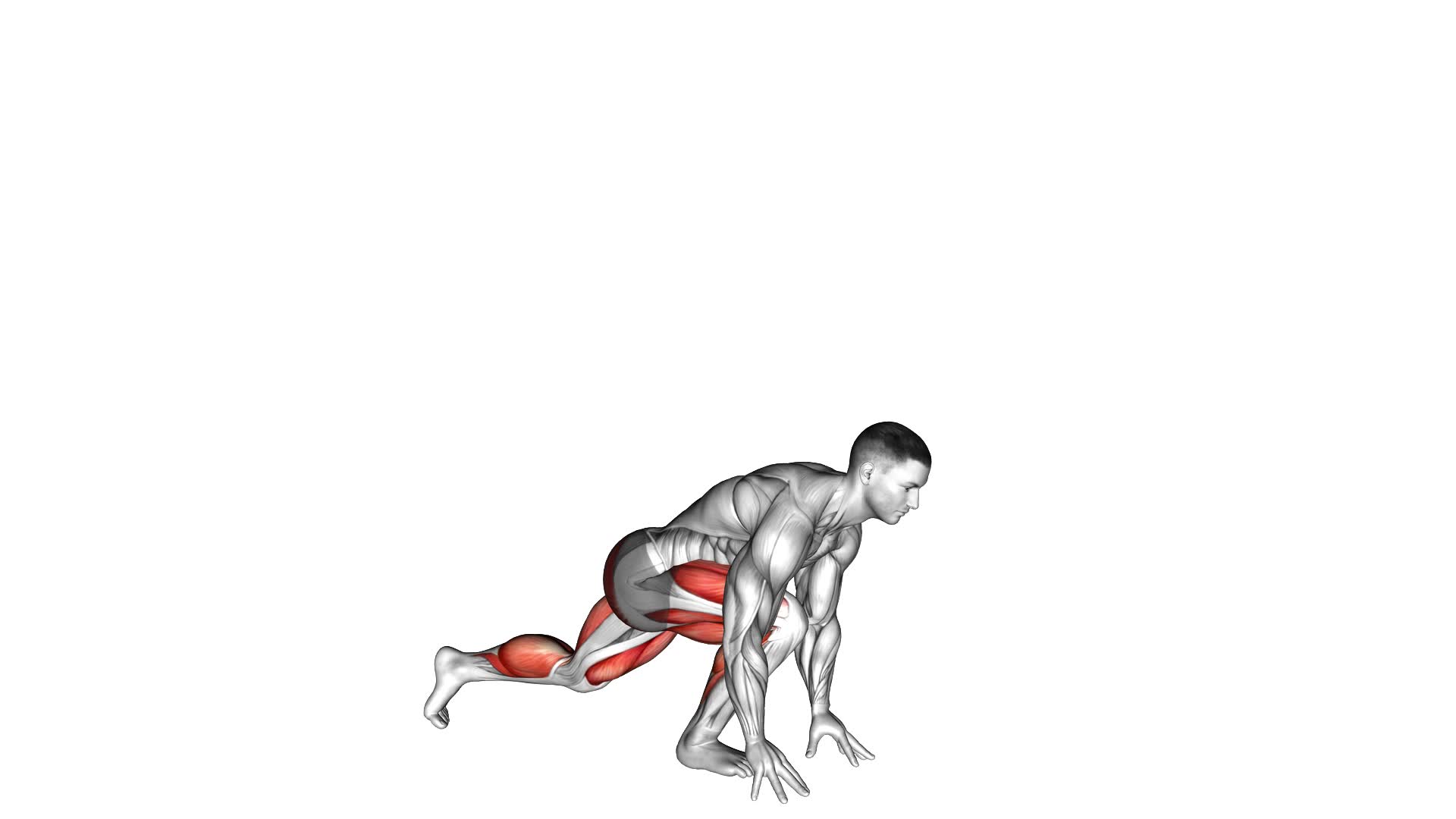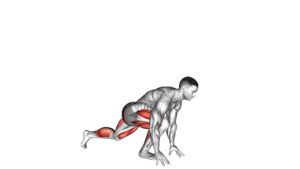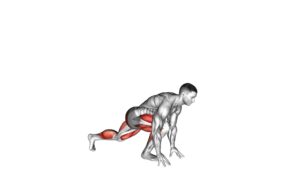Split Sprinter High Lunge – Video Exercise Guide & Tips

Are you looking for a challenging leg exercise that targets multiple muscle groups? Look no further than the Split Sprinter High Lunge!
Watch This Exercise Video
This video exercise guide and tips article will show you the proper form and alignment, as well as modifications for beginners and advanced variations.
Get ready to amp up your workout routine and achieve maximum results with these helpful tips!
Key Takeaways
- Engage core and keep front knee above ankle
- Proper alignment of front knee and engaged back leg
- Maintain upright torso and avoid leaning too far forward
- Use proper form and technique, focusing on controlled movements
Proper Form and Alignment
To maintain proper form and alignment in the split sprinter high lunge, focus on engaging your core and keeping your front knee directly above your ankle. This exercise is an effective way to target your quads, glutes, and hamstrings while also improving balance and stability.
When performing the split sprinter high lunge, it's important to avoid common mistakes that can compromise your form. One common mistake is allowing your front knee to extend past your toes, which can put unnecessary strain on your knee joint. Another mistake isn't engaging your core, which can lead to a loss of balance and stability. To avoid these mistakes, make sure to keep your front knee directly above your ankle and actively engage your core throughout the movement.
In addition to maintaining proper form, there are several variations of the split sprinter high lunge that you can incorporate into your workout routine. One variation is the weighted split sprinter high lunge, where you hold dumbbells or kettlebells in your hands to increase the intensity of the exercise. Another variation is the jumping split sprinter high lunge, where you explosively switch legs in mid-air, challenging your cardiovascular endurance.
Muscle Groups Targeted
Engage multiple muscle groups with the split sprinter high lunge, targeting your quads, glutes, and hamstrings while also improving balance and stability. This exercise is a great way to strengthen and tone your lower body while also challenging your core muscles.
Here are the benefits of including the split sprinter high lunge in your workout routine:
- Quads: The split sprinter high lunge specifically targets your quadriceps, the muscles on the front of your thighs. By performing this exercise, you can strengthen and sculpt your quads, leading to improved leg strength and power.
- Glutes: Your gluteus maximus, medius, and minimus, commonly known as your glutes, are also engaged during the split sprinter high lunge. These muscles are responsible for hip extension and stabilization, and by working them, you can develop a firmer and more lifted booty.
- Hamstrings: The hamstrings, located on the back of your thighs, are another muscle group that gets activated during the split sprinter high lunge. Strengthening your hamstrings can help improve your athletic performance and reduce the risk of hamstring injuries.
To maximize the benefits of the split sprinter high lunge and avoid common mistakes, make sure to keep the front knee aligned with the ankle, maintain an upright torso, and engage your core throughout the movement. Avoid leaning too far forward or letting the knee of the back leg touch the ground, as these can compromise your form and effectiveness of the exercise.
Modifications for Beginners
If you're a beginner, you can start by using a lighter weight or no weight at all for the split sprinter high lunge. This modification allows you to focus on mastering the movement before adding any additional resistance. It also reduces the risk of injury for those who may not have built up their strength and stability yet.
Another modification for beginners is to shorten the range of motion by not lunging as deeply. This will make the exercise more manageable and allow you to work on your form without compromising your balance.
Common mistakes that beginners often make with the split sprinter high lunge include not keeping the front knee aligned with the ankle, leaning too far forward, and not engaging the core. To avoid these errors, make sure to keep your front knee directly over your ankle and your torso upright throughout the movement. Engage your core by pulling your belly button towards your spine, which will help stabilize your body.
Advanced Variations and Progressions
To challenge yourself and further enhance your split sprinter high lunge, try incorporating advanced variations and progressions.
Here are three advanced modifications and techniques that will take your split sprinter high lunge to the next level:
- Add weights: Hold dumbbells or kettlebells in each hand while performing the split sprinter high lunge. This will increase the resistance and intensity of the exercise, making it more challenging for your muscles.
- Jumping split sprinter high lunge: Instead of simply stepping forward into the lunge position, add a jump to increase the explosiveness and cardiovascular demand of the exercise. Jump and switch legs mid-air, landing in the split sprinter high lunge position with the opposite leg forward.
- Plyometric split sprinter high lunge: Incorporate plyometric movements into the exercise by adding a jump after each lunge. This will engage your fast-twitch muscle fibers and improve your power and agility.
By incorporating these advanced modifications and techniques into your split sprinter high lunge routine, you'll continue to challenge your body and see progress in your strength and fitness levels.
Now, let's move on to some tips for getting the most out of the exercise.
Tips for Getting the Most Out of the Exercise
Maximize your results by focusing on proper form and technique during the split sprinter high lunge. This exercise offers a range of benefits and advantages, but it's important to avoid common mistakes to ensure you're getting the most out of it.
One common mistake isn't maintaining proper alignment. Make sure your front knee is directly above your ankle and your back leg is straight and engaged. This will help you engage the correct muscles and prevent strain or injury.
Another mistake is rushing through the exercise. Take your time and focus on controlled movements. This will help you engage your muscles more effectively and maximize the benefits of the exercise.
To get the most out of the split sprinter high lunge, pay attention to your core engagement. Keep your core tight and your spine aligned throughout the exercise. This won't only improve your balance and stability but also increase the intensity of the workout.
Lastly, don't forget to breathe. Many people tend to hold their breath during challenging exercises, but proper breathing is essential for optimal performance. Inhale deeply as you prepare, and exhale as you lower into the lunge.
Frequently Asked Questions
How Many Sets and Repetitions Should I Do for the Split Sprinter High Lunge Exercise?
To determine the number of sets and repetitions for the split sprinter high lunge exercise, it's important to consider your fitness level and goals. Start with 2-3 sets of 10-12 repetitions per leg.
Focus on maintaining proper form and technique throughout the exercise. As you progress, you can increase the number of sets and repetitions to challenge yourself.
Remember to listen to your body and make modifications or variations as needed to suit your fitness level.
Can I Do This Exercise if I Have Knee or Ankle Injuries?
If you have knee or ankle injuries, you may need to consider alternative exercises or modifications for the split sprinter high lunge. It's important to prioritize your safety and avoid further injury.
Consult with a qualified fitness professional or physical therapist who can provide specific recommendations based on your individual condition. They can suggest alternative exercises that are lower impact and put less stress on your knees and ankles.
What Are Some Common Mistakes to Avoid While Performing the Split Sprinter High Lunge?
When performing the split sprinter high lunge, it's important to be aware of common mistakes to avoid. Proper form is key to prevent injury and maximize the benefits of this exercise.
Some common mistakes to watch out for include:
- Leaning too far forward
- Not keeping your front knee aligned with your ankle
- Allowing your back knee to touch the floor.
Should I Use Weights or Resistance Bands While Doing This Exercise?
When performing the split sprinter high lunge, you might be wondering whether to use weights or resistance bands. Adding resistance to this exercise has its benefits. Weights can help increase strength and build muscle, while resistance bands provide a challenging resistance throughout the movement.
Both options can help improve your balance and stability. It ultimately depends on your fitness goals and preferences. Experiment with both to see which one suits you best.
How Often Should I Incorporate the Split Sprinter High Lunge Into My Workout Routine for Optimal Results?
To achieve optimal results, it's important to incorporate the split sprinter high lunge into your workout routine regularly. Aim for 2-3 sets of 10-12 repetitions per leg.
However, if you have knee or ankle injuries, it's best to consult with a professional before attempting this exercise.
To avoid mistakes, focus on maintaining proper form and balance throughout the movement.
As for weights or resistance bands, it's up to your personal preference and fitness level.
Conclusion
In conclusion, the split sprinter high lunge is a challenging exercise that targets multiple muscle groups and can be modified for beginners or advanced individuals.
By maintaining proper form and alignment, you can maximize the benefits of this exercise.
Remember to practice the variations and progressions to continually challenge yourself and keep your workouts engaging.
With these tips, you can make the most out of the split sprinter high lunge and achieve your fitness goals.

Author
Years ago, the spark of my life’s passion ignited in my mind the moment I stepped into the local gym for the first time. The inaugural bead of perspiration, the initial endeavor, the very first surge of endorphins, and a sense of pride that washed over me post-workout marked the beginning of my deep-seated interest in strength sports, fitness, and sports nutrition. This very curiosity blossomed rapidly into a profound fascination, propelling me to earn a Master’s degree in Physical Education from the Academy of Physical Education in Krakow, followed by a Sports Manager diploma from the Jagiellonian University. My journey of growth led me to gain more specialized qualifications, such as being a certified personal trainer with a focus on sports dietetics, a lifeguard, and an instructor for wellness and corrective gymnastics. Theoretical knowledge paired seamlessly with practical experience, reinforcing my belief that the transformation of individuals under my guidance was also a reflection of my personal growth. This belief holds true even today. Each day, I strive to push the boundaries and explore new realms. These realms gently elevate me to greater heights. The unique combination of passion for my field and the continuous quest for growth fuels my drive to break new ground.







